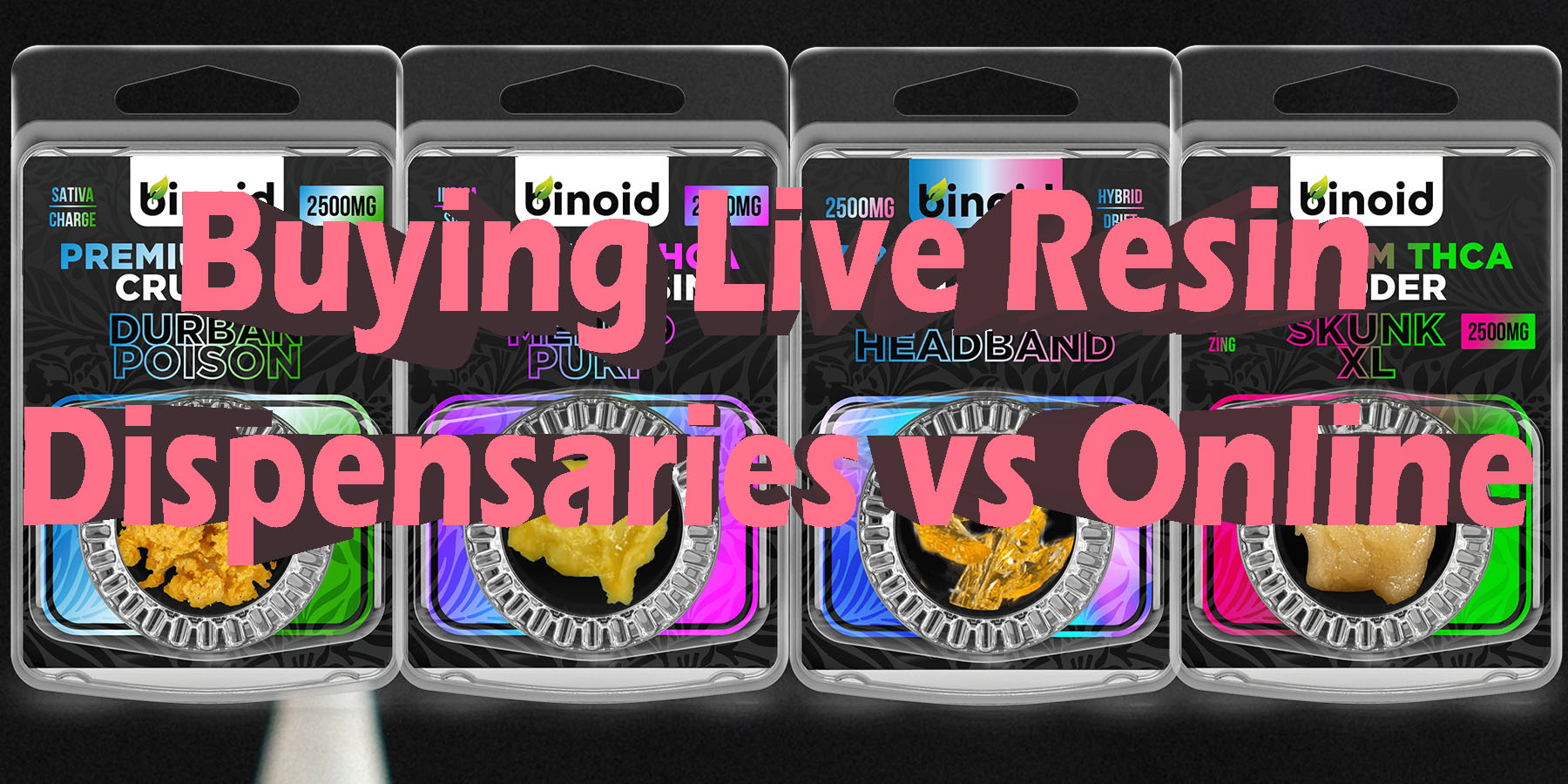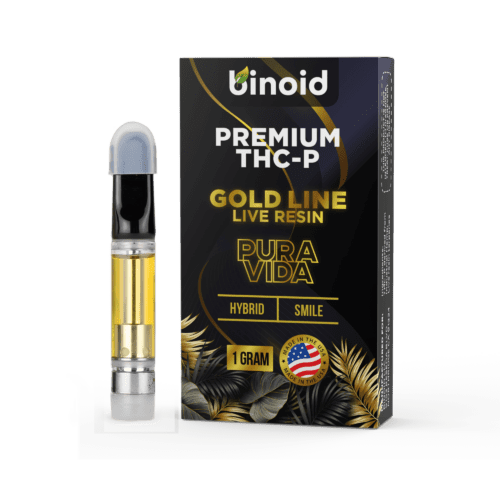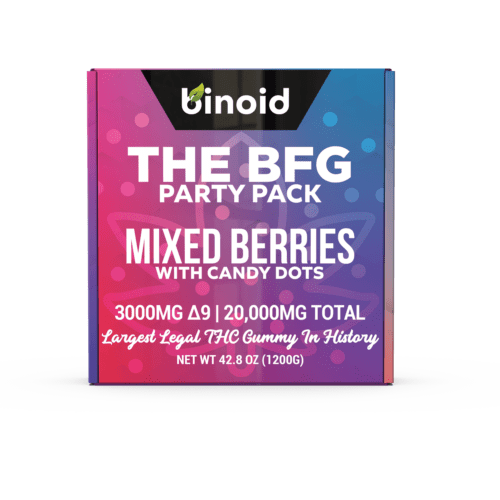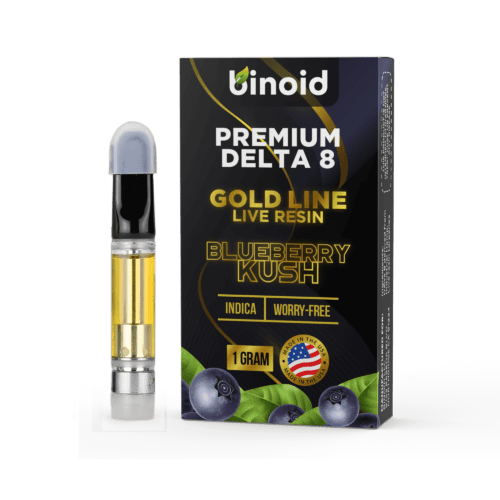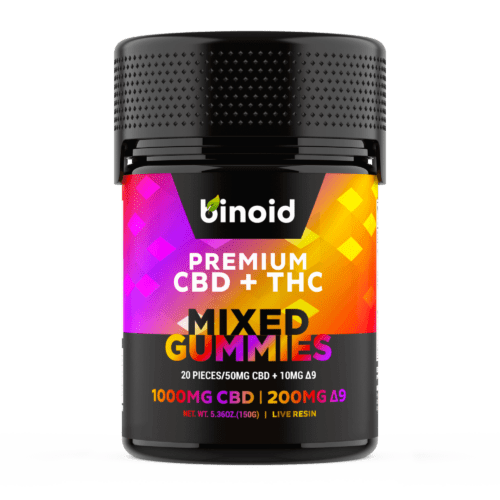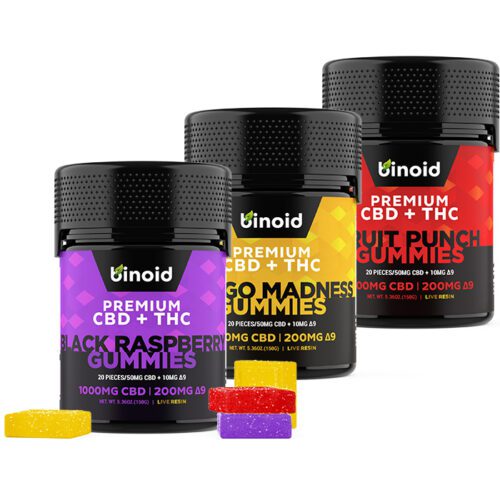Within the dynamic and ever-innovating sphere of cannabis concentrates, few products have garnered as much discussion and dedicated followings as Live Resin. This unique extract has captivated connoisseurs and curious consumers alike, primarily due to its distinctive aromatic profile and the rich, full-spectrum experience it promises, setting it apart from many other concentrated forms of cannabis. As individuals seek to explore the nuanced world of Live Resin, the practical question of where to reliably and safely source high-quality examples becomes paramount.
For those navigating this choice, particularly within the evolving American marketplace, the decision often lies between the established, regulated environment of physical dispensaries and the vast, digitally accessible realm of online cannabis and hemp retailers. Understanding the distinct advantages and potential limitations of each avenue is crucial for making an informed selection that aligns with one’s preferences for quality, variety, and purchasing experience.
TO BUY LIVE RESIN CLICK HERE
Recommended products
Getting to Know Cannabis Dispensaries and Online Cannabis/Hemp Shops and Their Purposes
Before we delve into the specific considerations for acquiring a premium concentrate like Live Resin, it is beneficial to establish a clear and comprehensive understanding of the two principal types of retail environments that serve consumers in the broader cannabis and hemp industry. Both the traditional brick-and-mortar dispensaries and their increasingly prominent digital counterparts, online shops, fulfill essential, though sometimes convergent, roles in providing access to an extensive array of plant-derived compounds and the diverse products formulated from them.
Each of these retail categories operates under a unique business paradigm, cultivates a distinct consumer atmosphere, and employs varied approaches to customer engagement and service, all of which are profoundly shaped by the complex interplay of evolving regulatory frameworks and shifting consumer expectations.
Understanding Cannabis Dispensaries and Their Purpose
The actual physical layout and design of dispensaries can exhibit considerable variation, encompassing everything from sleek, modern boutiques that evoke a high-end retail sensibility to more utilitarian, clinical settings focused on straightforward product access. Irrespective of their particular aesthetic, all licensed dispensaries are engineered with paramount attention to security protocols and strict regulatory adherence, commonly featuring controlled entry systems where staff rigorously verify age and, if required, medical cannabis patient status, before permitting customers onto the main sales floor where products are displayed.
Upon entering the main section of a dispensary, customers are usually greeted by well-organized display cases showcasing a variety of live resin products, often categorized by type, such as flower, edibles, concentrates, and topicals. The atmosphere is generally curated to be informative and welcoming, with staff members, often called “budtenders”, available to guide patrons through the selection process, explaining the nuances of different concentrate consistencies, terpene profiles, and cannabinoid contents.
These individuals are expected to possess a solid understanding of the dispensary’s inventory, including detailed knowledge of extraction methods and recommended consumption techniques for products, in order to assist customers in making choices that align with their experience level and desired outcomes. The inherent design of a dispensary encourages direct interaction with both staff and, where permissible, product packaging, offering a tactile and personalized shopping journey.
The fundamental purpose of a dispensary extends well beyond the mere transactional sale of cannabis goods; it also functions as a crucial hub for consumer education regarding responsible use and product knowledge, particularly for potent items. Dispensaries bear the significant responsibility of ensuring that all sales strictly comply with state and local regulations, which can include limits on purchase quantities of concentrates, specific packaging designed for child resistance, and detailed labeling requirements that include potency, ingredients, and lab testing information. This unwavering commitment to a robust regulatory framework is a hallmark of licensed dispensaries, aiming to provide a secure and legitimate channel for cannabis access while diligently preventing diversion to unregulated or illicit markets, ensuring consumer safety with products that demand careful handling.
Plus, dispensaries often contribute to consumer education by offering resources and consultations to help individuals understand the diverse world of cannabis concentrates. This educational aspect can be especially valuable for those new to concentrates or seeking to understand the specific benefits of terpene preservation. By providing a controlled and professional environment, dispensaries aim to destigmatize the use of concentrates and promote responsible consumption practices, emphasizing proper storage and handling. They are, effectively, the frontline representatives of the legal cannabis industry, interfacing directly between specialized extractors and the end-users within a highly structured system.
Understanding Online Cannabis/Hemp Shop and Their Purpose
An online cannabis or hemp shop operates as a digital, e-commerce platform, providing customers with the significant convenience of Browse, selecting, and purchasing a wide range of hemp-derived products. Unlike their brick-and-mortar counterparts, these internet-based retailers are not confined by the same physical or geographical limitations, enabling them to potentially reach a broader customer base, often extending across state lines, provided the products comply with federal and state laws, such as those pertaining to hemp-derived cannabinoids and concentrates containing less than 0.3% Delta-9 THC. The “physical structure” of such a shop is its website or mobile application, meticulously designed for user-friendly navigation, intuitive product discovery, robust search functionalities, and secure, encrypted transaction processing, often supplemented by extensive product descriptions, high-quality imagery, customer-generated reviews, and educational blog content relevant to hemp-derived products in general.
The primary objective of an online hemp shop is to offer unparalleled convenience, discretion, and access to an extensive assortment of hemp-derived items that meet all regulatory criteria. These e-commerce businesses can function in a couple of primary ways: some are direct-to-consumer (DTC) brands that manufacture their own line of products and sell them exclusively through their website, maintaining control over quality and branding from extraction to sale. Other online shops operate more like marketplaces, curating and selling products from a multitude of different brands, thereby offering consumers a wider selection and the ability to compare various brands, cannabinoid profiles, and product types without visiting multiple physical locations, assuming such products can be legally sold and shipped.
These digital retailers prioritize customer experience through intuitive web design, comprehensive product information (including details about extraction processes and terpene profiles), and responsive customer service, often available via chat, email, or phone. They invest in secure payment processing systems and discreet packaging to ensure customer privacy and satisfaction, which is particularly pertinent for cannabis-related products.
Not to mention, many reputable online cannabis/hemp shops emphasize transparency by providing third-party lab test results, commonly known as Certificates of Analysis (CoAs), directly on their product pages, allowing consumers to verify cannabinoid content, terpene analysis, and the absence of harmful contaminants before making a purchase, thereby building trust and confidence.
Ultimately, online cannabis and hemp shops aim to make the purchasing process as seamless and informative as possible, catering to consumers who value convenience, a wide selection, and the ability to shop from the comfort of their own homes, especially for federally legal hemp-derived products. They leverage digital marketing and educational content to reach and inform their audience about their offerings, thus having a significant role in the accessibility of such specialized hemp products. Their operational model is built on logistical efficiency, robust e-commerce technology, and a deep understanding of the evolving legal and market landscapes for hemp-based products, though the availability of true, high-THC Live Resin (which is marijuana) is strictly limited to state-licensed dispensaries and cannot be sold through these online hemp channels, but more on that later.
Recommended products
Exploring the Polarizing Concentrate Known as Live Resin
Having established a clearer understanding of the retail environments, our exploration now zeroes in on a specific type of cannabis concentrate that has deeply captivated the palates and preferences of many within the cannabis community: Live Resin – an extract stands apart due to its unique production process, which aims to preserve the full aromatic and flavor profile of the living cannabis plant, offering an experience that is often described as more vibrant and nuanced than concentrates made from dried and cured material. Its name itself, “Live Resin,” alludes to this very characteristic—capturing the essence of the plant in its freshest state.
This commitment to preserving the plant’s “living” profile, particularly its volatile terpenes, is what often makes Live Resin a premium product, sought after by those who prioritize a rich sensory experience alongside potent effects. However, its intensity in aroma and flavor, as well as its potent nature, can also make it a “polarizing” choice, deeply loved by some while perhaps being overwhelming for others less accustomed to such concentrated forms.
The history of Live Resin is relatively recent in the long timeline of cannabis consumption, emerging prominently in the cannabis concentrate scene around 2013-2014. Its development is often credited to a small group of pioneering extractors in Colorado, notably William “Kind Bill” Fenger and “Giddy Up”, who sought to create a concentrate that better captured the aromatic bouquet of the live cannabis plant, which is often lost during the traditional drying and curing processes.
They hypothesized that by flash-freezing freshly harvested cannabis plants and maintaining subcritical temperatures throughout the extraction process, they could preserve the volatile terpenes and other aromatic compounds that typically degrade over time. This innovative approach, initially utilizing butane as a solvent (BHO), resulted in a product with an unprecedented terpene profile, offering flavors and aromas far more intense and truer to the living plant than previously achievable, quickly gaining acclaim among concentrate connoisseurs and setting a new standard for high-terpene full-spectrum extracts (HTFSE).
Delving into the science and chemistry of Live Resin, its distinctive qualities stem directly from its unique production method, which begins immediately at harvest. Instead of undergoing the typical drying and curing stages, freshly harvested cannabis plants (flower and sugar leaves) are flash-frozen at extremely low temperatures (often using dry ice or cryogenic freezers) within hours, or even minutes, of being cut. This critical step halts the metabolic processes that lead to the degradation of terpenes and other volatile compounds, effectively preserving the plant’s “living” chemical profile.
The frozen plant material is then subjected to extraction, commonly using hydrocarbon solvents like butane (BHO) or propane (PHO), or sometimes CO2, at very low temperatures. This cold extraction process is crucial for selectively dissolving the cannabinoids and terpenes without co-extracting undesirable lipids, waxes, or chlorophyll, resulting in a cleaner, more flavorful concentrate. After extraction, the solvent is carefully purged, leaving behind the prized live resin, rich in both cannabinoids and a high concentration of diverse terpenes.
When considering the experiential effects of Live Resin, the primary driver is its exceptionally rich and complex terpene profile, working in concert with the native cannabinoids of the source plant—a phenomenon often referred to as the “entourage effect”. Terpenes are not only responsible for the distinct aromas and flavors of cannabis (ranging from citrusy and piney to earthy and floral) but are also believed to modulate and enhance the effects of cannabinoids like THC and CBD, contributing to a more nuanced, full-bodied, and often more intense experience compared to concentrates with lower terpene content, such as some distillates.
Users often report that Live Resin provides a more vibrant and clearer expression of the source strain’s unique characteristics, with effects that can feel more dynamic, potentially leading to sensations of euphoria, enhanced clarity, or deep bliss, depending on the specific terpene and cannabinoid synergy. Due to its typical potency and the intensity of the sensory experience, it is usually recommended for those with some existing cannabis experience.
Live Resin’s versatility and premium status mean it is incorporated into a variety of product types, offering consumers different ways to experience its rich terpene and cannabinoid profiles. Below are some of the common forms in which you might encounter Live Resin:
-
Distillate (Enhanced): While pure distillate is highly refined and often lacks a strong natural terpene profile, some products feature cannabis distillate that has been enhanced with separately extracted Live Resin terpenes (or “live terpenes”). This aims to combine the potency and purity of distillate with the authentic flavor and aroma of Live Resin, often found in vape cartridges, providing a more flavorful experience than standard distillate carts.
-
Flower (Infused): High-quality cannabis flower, including Loose Buds (from indoor flower, outdoor flower, or flower smalls), can be infused or coated with Live Resin extract to significantly boost its potency and enhance its flavor profile. Similarly, pre-rolls/joints are often available in an infused format, offering a more potent and aromatic smoking experience than standard flower by incorporating the rich qualities of Live Resin directly.
-
Vapes: Live Resin itself, due to its consistency, can be formulated into vapeable products. Pre-filled cartridges containing pure Live Resin (or a carefully refined Live Resin fraction suitable for vaping) are highly sought after for their authentic taste and potent effects. Disposable vape pens filled with Live Resin offer a convenient, all-in-one option for experiencing these premium terpenes on the go.
-
Gummies: While the volatile terpenes of Live Resin can be challenging to preserve through the cooking process for all edibles, some manufacturers have developed methods to incorporate Live Resin into gummy-based formulations. This aims to provide not only the cannabinoid effects but also some of the nuanced flavors and potentially modulated effects from the retained terpenes, offering a yummy experience.
-
Wax Dabs: Live Resin is most famously consumed via dabbing, and it can present in various consistencies often collectively referred to under the umbrella of “wax” or simply as dabs. These include textures like sauce, sugar, badder, budder, or shatter, all of which are suitable for vaporization using a dab rig or a specialized vape pen designed for concentrates, delivering a highly potent and flavorful vapor.
-
Tinctures (Specialty): While less common than other forms, some specialty tinctures might incorporate Live Resin to offer a sublingual product with a fuller spectrum of terpenes and cannabinoids than typical CBD or THC tinctures. These would aim to provide the nuanced benefits of the live plant profile in a controlled, orally administered dose, appealing to users seeking a smoke-free, full-spectrum experience.
-
Soft Gel Capsules: Similar to tinctures, live resin could theoretically be incorporated into Soft Gel Capsules, offering a pre-measured oral dose. However, preserving the delicate terpene profile within a capsule that undergoes digestion makes this a less common application, as the direct aromatic and flavor benefits of Live Resin are somewhat negated, though the entourage effect from the preserved compounds might still be sought.
Live Resin, by its nature of being extracted from fresh-frozen cannabis plants, inherently contains the full spectrum of cannabinoids present in that specific plant at the time of harvest, reflecting its unique genetic makeup. However, beyond these naturally occurring profiles in strain-specific Live Resins (especially those rich in Delta-9 THC or CBD found in dispensaries), the term “Live Resin” or more commonly “live terpenes” is also extensively used in the broader hemp-derived market to describe products where the aromatic and flavorful live terpene fraction, separately extracted from fresh-frozen hemp, is added to various isolated or broad-spectrum cannabinoid distillates.
This innovative approach allows manufacturers to create a wide array of products that aim to deliver the authentic, vibrant taste and aroma reminiscent of the live plant alongside the targeted effects of specific cannabinoids, catering to diverse consumer preferences.
Recommended products
So, here’s a look at some prominent cannabinoid categories and specific cannabinoids that’re frequently combined with live resin or live terpenes, illustrating the versatility this combination brings to the contemporary market:
-
Non-Intoxicating Cannabinoids: These cannabinoids are highly sought after for their potential to support general well-being without inducing a significant euphoric high. The addition of live terpenes to these cannabinoids is primarily focused on enhancing the overall sensory experience, improving palatability, and potentially contributing to a more nuanced entourage effect, making their consumption more enjoyable and potentially more holistically effective:
-
CBD (Cannabidiol): When CBD distillate or isolate is infused with live terpenes, it transforms the typically neutral or earthy taste of CBD into a vibrant, aromatic experience. This combination is particularly popular in vapes, tinctures, and even some edibles, where the rich terpene profile can make daily CBD consumption a more pleasurable ritual, allowing users to enjoy the potential calming and balancing properties of CBD alongside an authentic cannabis flavor and aroma. Studies suggest terpenes themselves can have various effects, and their presence may synergize with CBD for a more well-rounded outcome.
-
CBG (Cannabigerol): Often explored for its distinct properties that studies suggest could relate to promoting a sense of focus or providing comfort, CBG isolate or distillate products can be significantly enhanced by live terpenes. These terpenes not only improve the taste but may also work in conjunction with CBG to offer a more complete plant profile, making CBG vapes and tinctures more appealing to consumers looking for targeted, non-intoxicating support with a premium flavor experience.
-
CBN (Cannabinol): Known for its association with promoting tranquility and often sought after for evening use to encourage relaxation, CBN products greatly benefit from the addition of specific live terpene profiles. Terpenes like myrcene, linalool, or caryophyllene, commonly found in relaxing indica strains and preserved in their live resin form, can be paired with CBN in tinctures, edibles, or vapes to create formulations highly tailored for unwinding and preparing for a restful night, offering a more complex and potentially more effective product than CBN isolate alone.
-
-
Mild Potency Cannabinoids: This category includes cannabinoids that offer noticeable, often subtly psychoactive effects, but are generally considered less intense than Delta-9 THC. Live terpenes play a crucial role here in elevating the overall experience, making it more enjoyable, flavorful, and potentially modulating the onset or character of the effects:
-
Delta 10 THC (Delta-10-Tetrahydrocannabinol): Frequently described by users as providing a more uplifting, energizing, and sativa-like experience that may encourage creativity and focus, Delta 10 THC products are significantly improved by the infusion of live terpenes. Bright, citrusy, or piney terpene profiles, often captured from sativa-dominant live resins, can complement these reported effects, masking any potential harshness from the distillate and creating a more authentic and appealing flavor in vapes and edibles.
-
THCV (Tetrahydrocannabivarin): Recognized for its unique and often stimulating effects, which some studies suggest might influence appetite and energy metabolism, THCV products benefit immensely from the addition of live terpenes. These terpenes can make THCV’s distinct, sometimes described as “clear-headed,” psychoactivity more palatable and sensorially engaging, particularly in vapes where the aroma and taste are integral to the experience, potentially creating a more well-rounded and enjoyable effect profile.
-
-
Moderate Potency Cannabinoids: This group encompasses well-known cannabinoids that are mainstays in both marijuana and hemp markets. True Live Resin versions (containing these cannabinoids natively) are highly sought after for their robust, full-spectrum effects and authentic strain flavors, while hemp-derived distillates of these cannabinoids are often enhanced with live terpenes:
-
Delta 8 THC (Delta-8-Tetrahydrocannabinol): Popular for offering psychoactive effects that are often reported as being milder and more clear-headed than those of Delta-9 THC, Delta 8 THC distillate products are frequently infused with live terpenes. This addition not only vastly improves the flavor, often masking any characteristic taste of the D8 distillate, but also aims to provide a more nuanced, “entourage-like” experience that more closely mimics that of traditional cannabis strains.
-
Delta 9 THC (Delta-9-Tetrahydrocannabinol): Authentic, traditional marijuana-derived Live Resin is inherently rich in Delta-9 THC and is prized for its potent, full-spectrum effects that deliver the true character and complexity of the specific cannabis strain from which it was extracted. These premium products, showcasing an explosion of natural flavors and aromas from preserved terpenes, are primarily and exclusively found in state-licensed dispensaries in legal cannabis markets.
-
THCA (Tetrahydrocannabinolic Acid): As the non-psychoactive acidic precursor to Delta-9 THC, THCA is abundant in fresh cannabis and thus in true Live Resin. THCA live resin, often appearing as crystalline “diamonds” in a terpene-rich “sauce,” is exceptionally popular for dabbing, as the heat instantly decarboxylates THCA into psychoactive Delta-9 THC, delivering a very potent and flavorful experience. Some also seek THCA for its potential properties before conversion, though this is less common for recreational or experiential use.
-
-
Strong Potency Cannabinoids: This category includes newer, often semi-synthetic or rare cannabinoids known for their exceptionally high psychoactive potency, often significantly exceeding that of Delta-9 THC. For these compounds, the addition of live terpenes is almost essential, serving to dramatically improve palatability, mask potentially unpleasant tastes of pure isolates, and crucially, to modulate or “round out” the often overwhelmingly intense effects, making the experience more sensorially pleasant and potentially more manageable for experienced users:
-
HHC (Hexahydrocannabinol): A hydrogenated derivative of THC known for its notable stability and THC-like effects, HHC products are commonly enhanced with live terpenes. This pairing aims to provide a more “gourmet” and enjoyable experience, with authentic cannabis flavors and aromas elevating the HHC from a simple psychoactive effect to a more complete and satisfying sensory event, often found in vapes and edibles.
-
PHC (Hydrox4phc): As one of the more recently identified synthesized cannabinoids that becomes psychoactive upon metabolism, PHC is typically found in blended products. The inclusion of live terpenes in PHC vapes and edibles is critical for creating an appealing flavor profile and contributing to a more desirable overall effect, as the base cannabinoid may lack distinct sensory characteristics.
-
THC-B (Tetrahydrocannabutol): An analog of THC reported to have a strong binding affinity for CB1 receptors, THC-B is another potent cannabinoid. Products containing THC-B, usually vapes or edibles, almost invariably include live terpenes to make them more palatable and to add desirable flavor dimensions to the otherwise potentially harsh or neutral-tasting concentrate.
-
THC-H (Tetrahydrocannabihexol): Reported in preliminary studies and anecdotal accounts to be significantly more potent than Delta-9 THC, THC-H is often found in specialized vape cartridges and edibles aimed at experienced users. Live terpenes are added not just for flavor but also with the intention of potentially influencing the direction and quality of the very strong psychoactive effects.
-
THC-JD (Tetrahydrocannabioctyl): Another novel and highly potent cannabinoid, THC-JD products, particularly vapes and gummies, rely on the addition of vibrant live terpene profiles to enhance their appeal. These terpenes help create a more well-rounded and flavorful experience, which is important when dealing with such powerful psychoactive compounds.
-
THC-P (Tetrahydrocannabiphorol): Known for its exceptionally high binding affinity to CB1 receptors, suggesting it is many times more potent than Delta-9 THC, THC-P products are almost exclusively formulated with live terpenes. This is done to improve the flavor significantly and to potentially modulate or buffer its profound and intense psychoactive effects, making for a more controlled, albeit still extremely potent, experience.
-
Why Can Live Resin Be Found at Either a Dispensary or an Online Shop?
The availability of Live Resin products in both state-licensed dispensaries and through various online e-commerce channels is primarily determined by the legal status of the source cannabis material and the dominant cannabinoids present in the final extract, all viewed through the lens of federal and state laws.
If the Live Resin is extracted from marijuana (defined federally as cannabis containing more than 0.3% Delta-9 THC by dry weight), it is considered a marijuana product and can only be legally sold within state-licensed dispensaries in jurisdictions that have approved medical or adult-use cannabis programs. This is where consumers will typically find Live Resin rich in Delta-9 THC, THCA, and other cannabinoids specific to marijuana strains.
Conversely, if the Live Resin is derived from federally compliant hemp (containing no more than 0.3% Delta-9 THC as stated in the 2018 Farm Bill), or if “live terpenes” extracted from hemp are added to other hemp-derived cannabinoids (like CBD, Delta 8 THC, HHC, etc.), then these products can often be sold online and shipped to many states, provided they meet the Farm Bill’s criteria and are not otherwise restricted by specific state laws.
This has led to a burgeoning market for “hemp-derived Live Resin” products, which aim to deliver the aromatic and flavorful benefits of fresh-frozen extraction using compliant hemp as the source, or by adding hemp-derived live terpenes to various cannabinoid distillates. However, the regulatory landscape for hemp-derived psychoactive cannabinoids can be complex and varies significantly by state, sometimes leading to restrictions on certain hemp products regardless of their federal compliance.
Breaking Down the Live Resin Buying Matchup: Dispensaries vs. Online Shops
Selecting the optimal source for your Live Resin products requires a nuanced assessment of several key factors – from the desired cannabinoid profile (e.g., high THC vs. hemp-derived alternatives) and the authenticity of the terpene expression, to considerations of price, product variety, regulatory oversight, and the overall purchasing convenience.
While both established physical dispensaries and the rapidly expanding online retail sector offer persuasive reasons for patronage, they ultimately cater to differing consumer needs and are distinguished by their unique sets of benefits and potential limitations, especially when considering a premium and often potent concentrate like Live Resin. Appreciating the intricacies of this comparison calls for a detailed review of what each retail model furnishes, thereby enabling individuals to make a well-grounded decision that harmonizes with their personal requirements and shopping inclinations within the dynamic landscape of cannabis concentrate accessibility.
Contender #1: Dispensaries
Opting to purchase Live Resin from a state-licensed dispensary is often the preferred route for consumers seeking authentic, high-Delta-9 THC products and those who prioritize stringent regulatory oversight and the opportunity for direct professional guidance. Dispensaries operating within legal state cannabis frameworks provide a secure and controlled environment where individuals can access Live Resin extracted from marijuana, ensuring that these potent products have undergone state-mandated testing for cannabinoid potency, terpene profiles, and potential contaminants like residual solvents, pesticides, and microbials. This level of quality control and transparency, enforced by state regulations, offers a significant degree of consumer protection and assurance, which is particularly vital when dealing with concentrated cannabis products intended for inhalation.
The primary appeal of sourcing Live Resin from dispensaries frequently lies in the expertise available from trained budtenders and the ability to often view product consistency or detailed lab reports firsthand. These professionals can explain the nuances between different Live Resin consistencies (e.g., sauce, badder, sugar), discuss the specific terpene profiles of various strains and their likely experiential effects, and advise on proper consumption methods, such as dabbing temperatures and suitable hardware. This educational component is invaluable, especially for those new to dabbing or looking to maximize their appreciation of Live Resin’s complex aromatics and flavors. Furthermore, the immediate availability of the product, without any shipping delays, is a distinct advantage for those eager to experience their chosen concentrate.
Pros & Cons
Evaluating dispensaries for Live Resin purchases involves considering both their strong points and their limitations, especially for a product prized for its freshness, terpene content, and often high potency. The controlled, regulated nature of dispensaries directly shapes these aspects.
Pros:
-
Access to High-THC, Marijuana-Derived Live Resin: Dispensaries are the exclusive legal source for Live Resin extracted from marijuana, offering authentic, high-Delta-9 THC/THCA products with robust, strain-specific terpene profiles.
-
Stringent State-Mandated Testing and Quality Control: Live Resin sold in dispensaries must comply with state testing regulations for potency, purity (residual solvents, pesticides, etc.), and labeling accuracy, providing a higher level of safety assurance.
-
Expert In-Person Guidance on Potency and Consumption: Budtenders can offer crucial advice on selecting appropriate Live resin strains, understanding terpene effects, proper dabbing techniques, and responsible dosing for these potent concentrates.
-
Verification of Product Freshness and Storage: Consumers may have a better opportunity to inquire about product handling and storage, which are critical for preserving Live Resin’s volatile terpenes, and can often see harvest or production dates.
-
Immediate Acquisition and No Shipping Concerns: Products are available immediately, with no waiting for delivery and no risk of damage or degradation during shipping, which can be a concern for temperature-sensitive concentrates.
-
Support for Regulated, Local Cannabis Industry: Purchases support state-licensed businesses that adhere to local regulations and contribute to the compliant cannabis economy.
-
Opportunity to See Product Consistency (Sometimes): Depending on packaging and display rules, consumers might be able to get a better sense of the Live Resin‘s texture and quality before buying.
Cons:
-
Limited Geographic Availability: Only accessible to consumers in states with legal, operational cannabis dispensaries, restricting access for many.
-
Generally Higher Prices: Due to regulatory burdens, testing costs, and physical store overhead, Live Resin from dispensaries is typically more expensive than some products marketed as “Live resin” from online hemp retailers.
-
Potentially Narrower Selection of Hemp-Derived Live Resin Alternatives: While strong in marijuana products, the range of purely hemp-derived Live Resin (e.g., CBD live resin or live terpenes added to other hemp cannabinoids) may be more limited compared to specialized online shops.
-
Less Anonymity and Purchase Tracking: Dispensary purchases require ID verification and are often tracked by state systems, offering less privacy than online transactions.
Recommended products
Contender #2: Online Shops
Online hemp shops and direct-to-consumer brands have emerged as a significant channel for consumers interested in exploring certain types of Live Resin products, primarily those derived from federally compliant hemp or those featuring live terpenes added to hemp-derived cannabinoids. Their main allure lies in the broad accessibility and convenience they offer, allowing individuals to browse and purchase from a wide array of options from the comfort of their homes, with delivery to states where such products are legally permitted. These digital platforms can showcase a diverse range of “hemp Live Resin” or “live terpene” infused products, often highlighting unique cannabinoid blends (like Delta 8 or HHC with live terpenes) that may not be readily available in traditional marijuana dispensaries, thus catering to a niche market seeking specific effects combined with rich terpene profiles.
A key aspect that reputable online vendors in this space emphasize is transparency regarding their product sourcing and composition, often through readily available third-party Certificates of Analysis (CoAs). For products marketed as hemp-derived Live Resin or containing live terpenes, these CoAs should ideally provide not only cannabinoid potency (including verification of <0.3% Delta-9 THC) but also a terpene profile analysis, which is crucial for consumers seeking the authentic aromatic and flavor benefits associated with the “live” extraction process.
The competitive online marketplace can also lead to more varied pricing structures and product innovation, as brands seek to differentiate themselves with unique formulations and terpene blends, though the onus is heavily on the consumer to diligently vet vendors and understand precisely what type of “live resin” product they are purchasing, especially concerning its psychoactive cannabinoid content and legal status.
Pros & Cons
The digital marketplace for products marketed as Live Resin (often hemp-derived or featuring live terpenes) presents its own distinct advantages and disadvantages. Careful consideration is vital, especially regarding product authenticity and regulatory compliance.
Pros:
-
Wider Accessibility for Hemp-Derived “Live Resin” Products: Online shops can provide access to hemp-derived Live Resin (e.g., CBD, CBG live resin) or products infused with live terpenes combined with various hemp-derived cannabinoids (Delta 8, HHC, etc.) to consumers in many states where marijuana dispensaries are not available.
-
Potentially Greater Variety of Cannabinoid-Terpene Combinations: The online market may feature a broader array of innovative products that combine specific isolated hemp cannabinoids with diverse live terpene profiles, offering unique flavor and effect combinations.
-
Convenience of Home Shopping and Delivery: The ability to browse, research, and order 24/7 from home with direct delivery is a major convenience.
-
Competitive Pricing for Hemp-Derived Options: Due to lower overhead and a competitive market, hemp-derived Live Resin products or those with live terpenes may be more affordably priced online than high-THC Live Resin in dispensaries.
-
Access to Extensive Product Information and Lab Reports (CoAs): Reputable online vendors provide detailed product descriptions, educational content, and CoAs, allowing consumers to research cannabinoid content and terpene profiles for hemp products.
-
Discreet Purchasing Process: Online orders are typically shipped in plain packaging, offering a higher degree of privacy for consumers.
-
Customer Reviews and Community Feedback: Online platforms often feature user reviews that can offer insights into the quality, flavor, and effects of specific hemp-derived Live Resin products and brands.
-
Innovation in Hemp-Based Formulations: The online space often sees rapid innovation in how live terpenes are combined with various emerging hemp-derived cannabinoids, leading to novel product types.
Cons:
-
No Access to Marijuana-Derived High-THC Live Resin: Online shops operating under federal hemp regulations cannot legally sell authentic Live Resin extracted from marijuana that contains >0.3% Delta-9 THC. Consumers seeking this must go to licensed dispensaries.
-
Crucial Need for Vendor Vetting and Product Scrutiny: The online market for hemp-derived products, including those labeled “Live Resin,” can have inconsistent quality control. Consumers must diligently research vendors and lab reports to avoid mislabeled, low-quality, or potentially unsafe items.
-
Ambiguity of “Live Resin” Labeling for Hemp Products: The term “Live Resin” in the hemp market may sometimes refer to live terpenes added to distillate, rather than a true full-spectrum live extract of hemp. Clarity and transparency from the vendor are essential.
-
Shipping Times and Potential for Product Degradation: Products require shipping, which involves wait times and a small risk of temperature fluctuations that could potentially affect the volatile terpenes in some Live Resin products if not packaged correctly.
Which Option is the Best for Your Live Resin Needs?
The journey to experiencing Live Resin is akin to seeking a rare, vibrant echo of the cannabis plant in its most vital moment—a fleeting symphony of aromas and flavors captured at their peak. Choosing your source, then, is not merely a transaction; it’s like selecting the lens through which you’ll view this living masterpiece. Each option, dispensary or online, offers a distinct perspective, shaping the authenticity and character of the encounter.
For those who cannabis users who wish to witness the original artwork in its most unadulterated form—the rich, full-spectrum tapestry of marijuana-derived Live Resin, teeming with its native THC and an orchestra of fresh terpenes—the state-licensed dispensary serves as the curated gallery. Here, authenticity is paramount, and expert docents guide your appreciation. The digital marketplace, in contrast, is a dynamic studio of innovation, where “live terpenes” extracted from hemp become vibrant pigments, skillfully applied to enhance a diverse canvas of federally compliant cannabinoids. This online realm offers broad access to these unique aromatic compositions, like the ones found at Binoid for instance.
And so, as you approach Live Resin, consider the experience you desire: the original masterpiece, showcased with provenance, or an inspired creation accessible through modern ingenuity. Let your informed discernment lead you to an encounter that truly resonates with the plant’s vibrant spirit.

